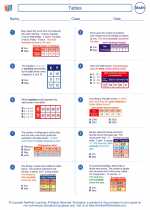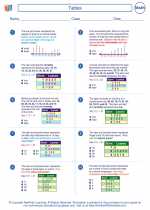Transformation in Mathematics
In mathematics, a transformation refers to the movement or change of a geometric figure in the coordinate plane. There are four main types of transformations: translation, reflection, rotation, and dilation. Each type of transformation has specific properties and rules that govern how it affects the position and shape of a figure.
Translation
A translation is a transformation that moves a figure from one location to another without changing its size, shape, or orientation. The figure is shifted along the x and y-axis by a certain distance. The general rule for translating a point (x, y) by (a, b) is (x + a, y + b).
Reflection
A reflection is a transformation that flips a figure over a line, called the line of reflection. The reflected figure is a mirror image of the original figure. The general rule for reflecting a point (x, y) over the x-axis is (x, -y) and over the y-axis is (-x, y).
Rotation
A rotation is a transformation that turns a figure around a fixed point, called the center of rotation. The figure is rotated by a certain degree either clockwise or counterclockwise. The general rule for rotating a point (x, y) by θ degrees is (x' = x*cos(θ) - y*sin(θ), y' = x*sin(θ) + y*cos(θ)).
Dilation
A dilation is a transformation that resizes a figure by a scale factor, either enlarging or reducing its size. The figure remains similar to the original but may change in size. The general rule for dilating a point (x, y) by a scale factor k is (kx, ky).
Study Guide
To study transformations, it is important to understand the properties and rules for each type of transformation. Practice identifying and performing translations, reflections, rotations, and dilations on various geometric figures. It is also helpful to understand how transformations can be combined and how they interact with each other. Additionally, be familiar with the coordinates of points and how they change after each transformation.
Remember to use the general rules for each transformation to perform calculations and check your answers by plotting the transformed points on the coordinate plane.
Understanding transformations is essential for geometry and can also be applied to real-world situations, such as in mapping, art, and design.
.



